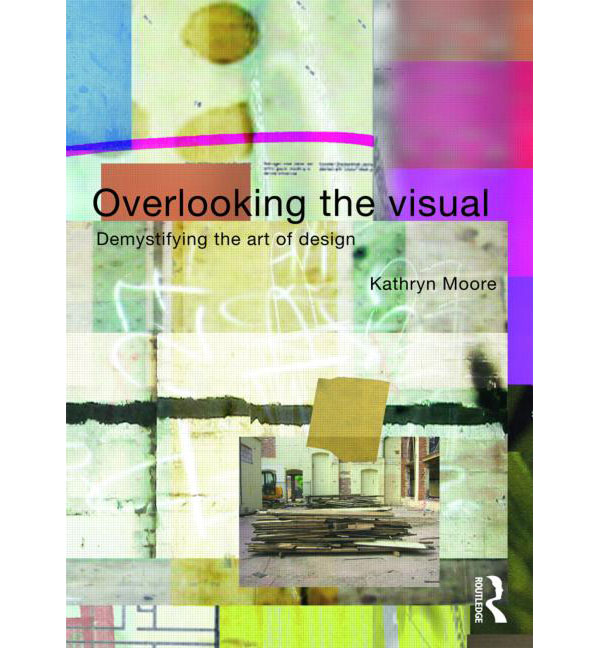
Author: Kathryn Moore (Routledge, 2010)
In my educational experience, there has been no exercise more stimulating, frustrating, and downright mystifying than trying to learn design. Compounded by overarching ambiguity around whether or not design actually can be taught, each professor and each project seemed to redefine the boundaries of landscape design and the criteria by which good design could be separated from the bad. This is the problem Kathryn Moore tackles in Overlooking the Visual: Demystifying the Art of Design.
Under the premise that design is a primary force in shaping our physical, cultural, and social environments and therefore must be made more accessible, she tackles the issues surrounding design pedagogy that frequently lead to the mundane or mediocre design that defines many of our environments. Written for all design professions, using landscape as the example, it is a call to action for making design more accessible and convincing, as a means of finding better solutions to global problems.
Rather than applying a prescriptive formula to design teaching, Moore uncovers the cultural and theoretical frameworks that cloud our ability to teach and, therefore, learn design, presenting a more grounded framework for thinking about the design process. The book can be roughly split into two halves: the first half seeking to dispell the myths about the nature/culture divide, and the second proposing a roadmap for design teaching based on a more inclusive theoretical framework of art, science, nature, and culture.
Dispelling the Myths
Based on an in-depth look at various philosophical theories and ingrained social constructs surrounding the senses, perception, language and intelligence, this part of the book demonstrates the inherent flaws in treating the artistic process and scientific process as fundamentally different. Moore argues that when the senses are separated from intelligence—intuition from critical analysis—the result is the attitude that artistic or creative thinking is something you either have or you don’t, making it impossible to be taught or learned. Designers working under this assumption, thus, feel the need to choose either an overly technical and scientific approach to design—which makes the process of giving form to ideas incredibly difficult—or an intuitive approach to design—which makes design decisions (especially those that result in large, capital-intensive projects) difficult to justify.
Proposing a New Framework
The second half of the book addresses the design process based on a shift in thinking in which knowledge, intelligence, and technical expertise are inherently linked to even the most artistic parts of the design process. Through explaining the roles of analysis, drawing, concept development, and design iteration, it demonstrates how each contributes to a better understanding of the design problem and therefore a more culturally astute solution. Moore offers a series of exercises to assist in developing stronger artistic sensibilities and critical analysis skills, but more importantly, she offers a framework for approaching design based on a set of learnable skills and thought processes.
Although Moore states that her premise for writing Overlooking the Visual is a need to make design more accessible, I would argue the style in which it is written has the opposite effect. Composed for an audience of design instructors, its heavy theoretical underpinnings and excessively academic language serve to exclude many students and instructors. This is a sample sentence from one of the early chapters:
Even more recent discussions relating to the hermeneutical and interpretive nature of reasoning in design rely on the paraphernalia of image schemata, mental images, language structures, bodily experiences, tacit knowledge or pre-conceptual images.
That being said, if you are willing to trek through (or enjoy!) this type of language, reading Overlooking the Visual can certainly point the way to a more clear understanding of the design process and the skills needed to produce quality design work.
***
For more information on Overlooking the Visual: Demystifying the Art of Design, visit the Routledge website.
**
Pietra Basilij is an urban exploration enthusiast who is passionate about community development and testing the public realm. She is a recent graduate from the Master of Landscape Architecture program at UBC and has a background in business and literature.

